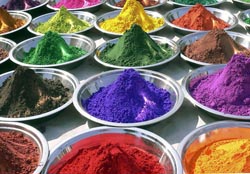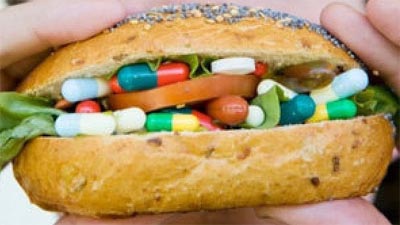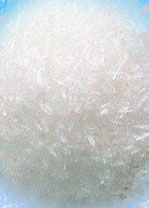Food additives

We all buy food and try to that be fresh and of high quality. To do this, each of us at once looked at the label of any of the products. Self-respecting manufacturer will always say (even in the fine print), the composition of the product. Food additives are almost in every food product and should be marked on the product packaging.
Food additives - is words for us if we buy the product we can be treated with special caution, even not to buy the product. This is not always the case... Food additives is used to preserve the product for a long time and give it a particular taste of the target.
All food additives can be divided into the relatively harmless, harmful and dangerous supplements.
Harmless food additive

To harmless food additive are related:
E-100, E-101, 104, 105, 111, 122, 126, 130, 132, 151, 152, 160, 161, 162, 163, 170, 174, 175, 181, 200, 201, 202, 203, 236, 260, 261, 262, 270, 280, 290, 300, 301, 306, 307, 322, 326, 327, 331, 332, 333, 334, 335, 336, 337, 382, 400, 401, 402, 404, 405, 406, 410, 411, 413, 414, 420, 421, 422, 440, 471, 472, 473
Read more about some of them:
Many of them are of natural origin, for example E-330 is citric acid - present in all citrus fruits. E-160 is a - carotene, it is contained in tomatoes, E-101 - is a vitamin B2. E-400 is isolated from seaweed (its name - sodium alginate).
In nature there are also food additive in the form of salts of sorbic and benzoic acids. They are rich in mountain ash, cranberry, cranberries. What, in Your opinion, the product may contain such a collection of dietary supplements: vitamin C E-300, tartaric acid (E-334, acetic acid E-260, carotene E-160A, glutamic acid E-620, citric acid E-330, E niacin-375, anthocyanin E-163, succinic acid E-363, cystine-920, vitamin B E-101? Of course, it's Apple!
harmful food additives
The following food additives that cause various diseases:
For an example:
E-221-226 E-320-321 E 338-341, E-407 E-450 E-461-466 - cause disease of the gastrointestinal tract, from them : E-220, 221, 222, 223, 224 - adversely affect intestinal function, E-338, 339, 340, 341, 450, 461, 463, 465, 466- bad for the digestion;
E-171 - E-173 E-320 - E-322 - kidney disease and liver.
Food additives E-230 E-231 E-232 E-239 E-311-313 - are strong allergens.
E-230, 231, 232, 233 negative effect on the skin.
Next additives - E-320, 321 raise cholesterin.
E-200 - Food additive interferes with the absorption of vitamin B12.
Food additives E-311, 312 - increase irritability and sensibility of the nervous system.
Additive E-330 activates the putrefactive processes in the mouth. By the way, the E-330 is widely used in many sweet beverages such as soft drinks, and is also used in other products.
Very harmful food additives
To very harmful food additives are related:
E-131, 142, 210, 211, 213, 214, 215, 216, 217 - they can cause cancer, but E-123, 102, 110 - provoke toast cancer cells! (and the E-110 is used in candy, chocolate bars, fruit syrups, fish sticks, ready made sauces, in some cheeses and thresholds.
The following set of food additives comes to malignant tumors: E-103 E-105 E-121 E-123 E-125 E-126 E-130 E-131 E-142 E-152 E-210 E-211 E-213-217 E-240 E-330 E-447
Special food additive is E-621 (monosodium glutamate).
Monosodium glutamate - the sodium salt of glutamic acid. Yellowish crystals of this substance are without taste, are a food additive, that significantly strengthens taste qualities of food!

A few words about the opening of glutamic acid. About this substance was already known in 1866 - was derived from cleavage products of wheat protein by the German chemist Rithaudeen. Later it became known that this acid is actively involved in biochemical processes in the Central nervous system and in intracellular protein and carbohydrate metabolism. From all the amino acids only glutamic acid is intensively oxidized by the brain tissue, with releas high amount of energy required for the processes occurring in the brain tissue.
In the beginning of the 20th century it became known that glutamic acid contained in the products significantly enriches the flavor! In 1909 created the salt monosodium glutamate with patented technology and since then it is used as a flavor enhancer (E621).
So, how useful this substance?!
As defined, monosodium glutamate is essential for normal functioning of the Central nervous system. In a human language is receptors that recognize the substance. But adding it to food products it requires adherence to strictly defined measures! Due to the sodium glutamate can be great to save on meat, seafood mushrooms, mushrooms and other natural products: for example, to obtain rich taste (indistinguishable from natural) now there is no need to put a fresh meat, but rather only its extract or a few meat fibers. Combined with a pinch of monosodium glutamate the taste of the surrogate is guaranteed!! The usefulness of the product is reduced to "zero"! Glutamate is added to cold snacks, frozen meals, convenience products (now 95% of such products contain monosodium glutamate). In the 70-ies of the American neuroscientist discovered that large doses of monosodium glutamate causes brain damage in rats! It was later known that this substance in overdose provokes some complications for people with weak health, causing headaches, palpitations, feeling of stretching limbs, hands, head, neck and many other symptoms! It is therefore recommended not to overdos it with the consumption of food containing the food additive like a E621 - monosodium glutamate!